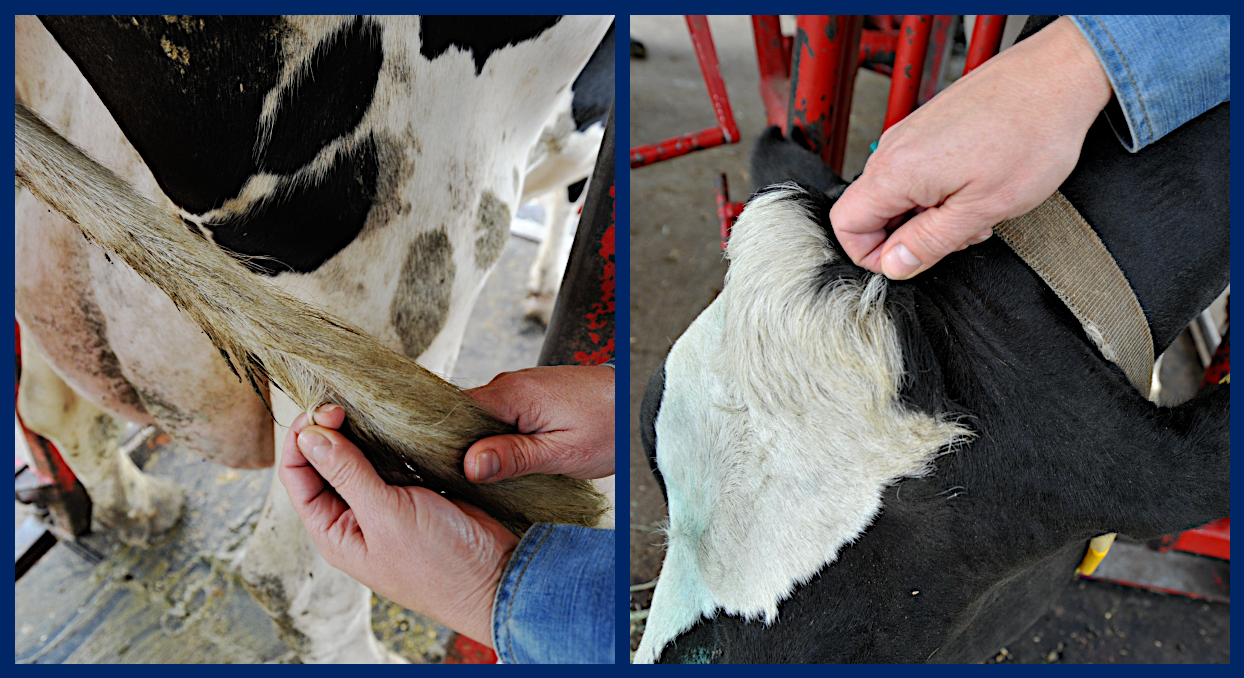Quick Summary
Click here for Price and Turnaround Time
Phenotype: Paunch calf syndrome (PCS) is characterized by abnormal development of multiple organs, craniofacial deformities, an enlarged fluid-filled abdomen, and liver fibrosis. Affected calves are usually stillborn and can present a protruding tongue and cleft palate.
Mode of Inheritance: Autosomal recessive
Alleles: N = Normal/Unaffected, P = Paunch calf syndrome
Breeds appropriate for testing: Romagnola, Romagnola crosses
Explanation of Results:
- Cattle with N/N genotype do not have paunch calf syndrome and cannot transmit this paunch calf syndrome variant to their offspring.
- Cattle with N/P genotype will not be affected by paunch calf syndrome, but are carriers. They will transmit this paunch calf syndrome variant to 50% of their offspring. Matings between two carriers result in a 25% chance of producing a calf with paunch calf syndrome.
- Cattle with P/P genotype will have paunch calf syndrome, a lethal condition, and are likely to be stillborn.
Sample Collection
Most of the cattle DNA tests offered by the VGL are carried out using cells from the roots of a hair sample (roughly 20-40 hairs).
Hair samples should be taken from the switch of the tail, the poll, or the neck.

1. Clean (use comb if possible) tail switch, poll, or neck by removing all loose hair and foreign matter.
2. Use fingers or pliers to grasp approximately 8-10 hairs close to the skin and pull. Pull (do NOT cut) hair strands. Examine the end of hair strands for presence of root bulbs. Hair roots are necessary for DNA testing. If the majority of hair strands lack the root bulbs, discard hair and start again.
3. Repeat until you have approximately 20-40 hairs with root follicles attached.
4. Place the 20-40 hairs with root follicles attached in the envelope and seal with the animal’s ID written on the envelope. If hairs are long they can be taped to the submission form. Do not tape the roots.

5. Repeat steps 1-4 for each additional animal being sampled.
Note:
- Hair should be dry.
- If hair has excess dirt and debris, please brush out if possible before pulling hairs for sample.
- Do not cut the hair! The roots contain the DNA for testing.
- When sampling several animals in the same session, make sure that there are no hair strands in your hands to reduce the possibility of sample contamination. Clean hands and/or pliers if possible.
Paunch Calf Syndrome (PCS) is an inherited lethal defect of Romagnola cattle. PCS is characterized by abnormal development of multiple organs, craniofacial deformities, an enlarged fluid-filled abdomen and liver fibrosis. Affected calves are usually stillborn and can present a protruding tongue and cleft palate. PCS is caused by a mutation (c.2503G>A) in the Lysine (K)-Specific Demethylase 2B (KDM2B) gene that affects its normal function. The KDM2B gene is important for development and cell differentiation, including the development of embryonic endodermal- and mesodermal-derived organs and tissues such as liver and bone. Compromised function of KDM2B thus can have multi-organ deleterious effects.
PCS is inherited as an autosomal recessive trait. This means that 2 copies of the mutation (P/P) are required to produce the disorder. Animals with 1 copy of the mutation (carriers, N/P) are normal but can produce 25% affected calves when bred to other carriers. PCS affects both male and female calves. The KDMB2 mutation arose naturally and increased in prevalence in the Romagnola breed as a consequence of close inbreeding and “popular sire” effects which were amplified by the use of artificial insemination. Common ancestors of PCS cases are sires Dritto and Treno.
Testing for PCS in Romagnola cattle helps breeders determine if the PCS mutation is present among breeding stock and implement mating strategies to reduce incidence of PCS while retaining genetic diversity in the breed. Carriers can be safely bred to N/N mates as this type of breeding will not produce PCS calves.
